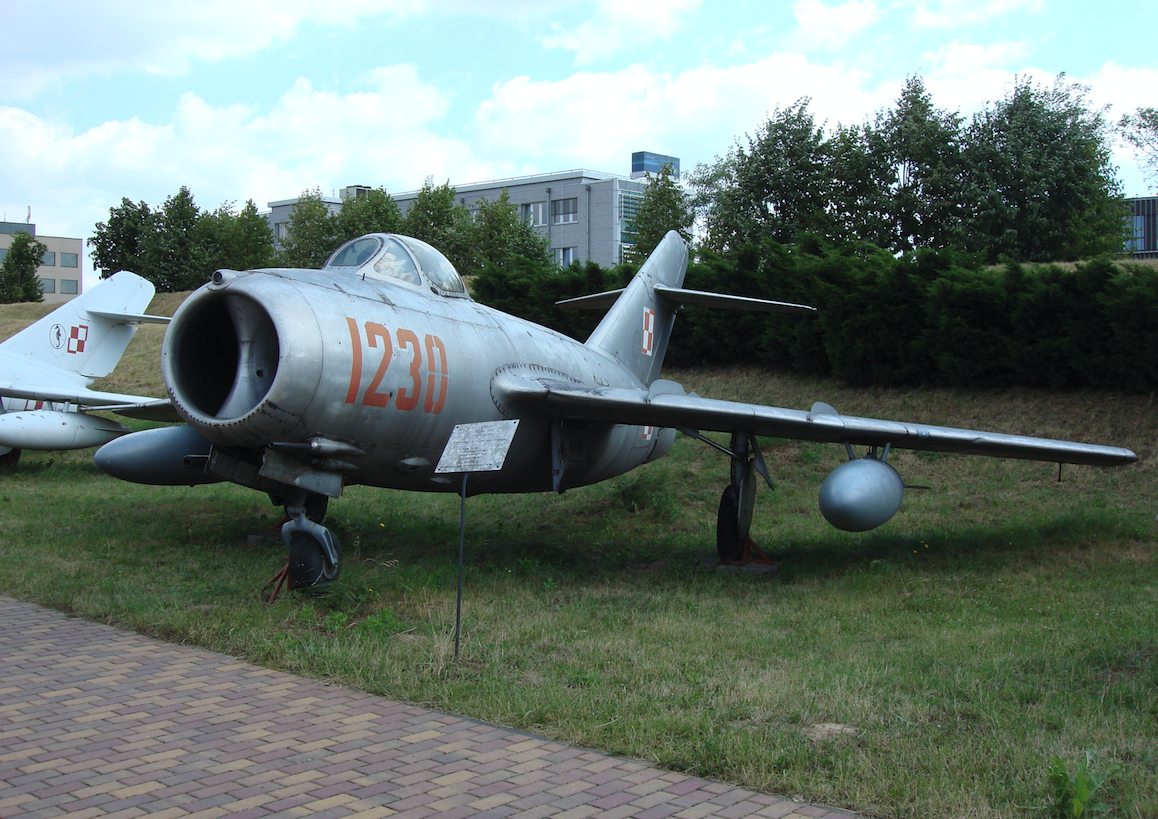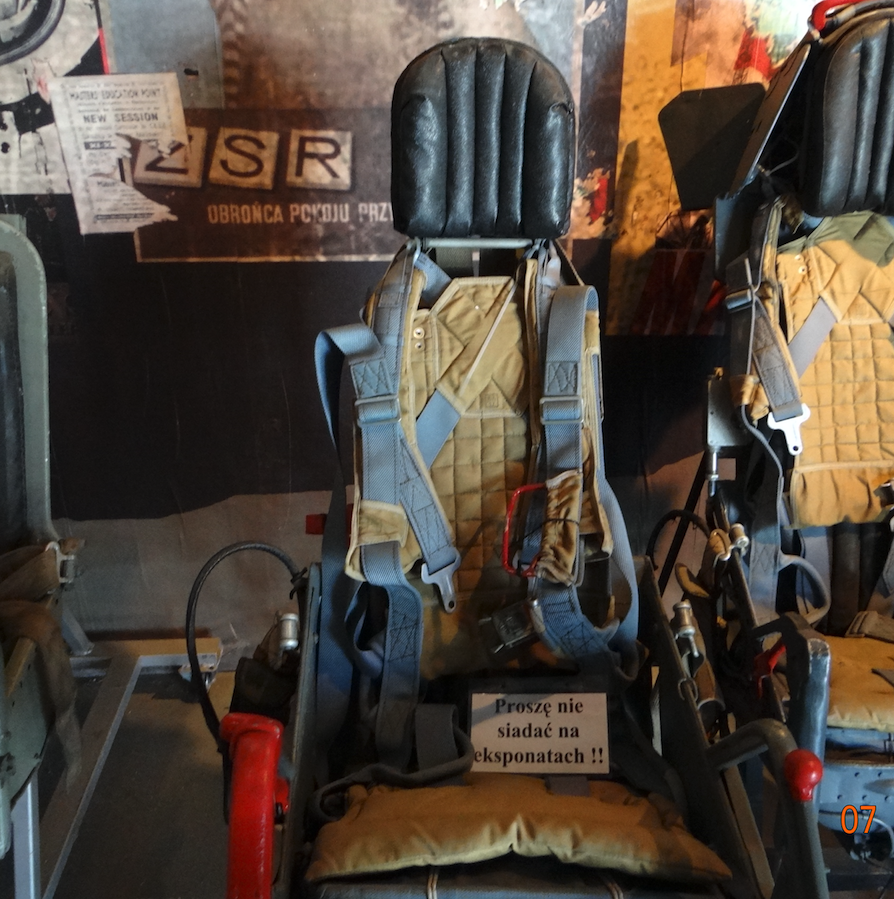Kraków 2017-11-28
The crash of the PZL Lim-2 plane with Lieutenant Pilot Marian Wolszczak on May 18, 1955.
A cry for the truth.
50 years in the Polish Military Aviation is a period of dynamic development. There has been a quantitative and qualitative leap. However, it was a development beyond the ordinary defense needs of Poland, and made at the request of the Moscow state. The Polish Aviation Industry launched large-scale production of modern combat aircraft, which were adopted for service. For these aircraft, all technical facilities were developed and new personnel, both ground and flying, were trained. In order to speed up the training process, it was decided to shorten the pilot training period from three to two years. The training of basic ground personnel has been moved from flight schools to the division level and the requirements for applicants have been lowered. Most of the ground staff positions were taken by the soldiers, trained in 3-4 month courses. It is worth mentioning that all the most important functions in the Air Force Command were performed by Soviet officers in Polish uniforms.
A question arises – What kind of behavior of this type brought about the results? Great in terms of quantity and image. In the West, they should be afraid of us. In Legnica, Konstanty Rokossowski walked in socks on maps spread on the floor, planning actions on the Polish Front in the future war.
Unfortunately, the sheep’s drive to achieve successive command success caused the deterioration of flight safety, which resulted in a significant increase in accidents and catastrophes. Many young, talented officers died, plunging families into grief for decades. Yes, the military secured these families materially. But finding out the truth at that time was practically impossible. The few documents the family received were laconic and, in principle, left no doubt that the case was closed. These tragedies were not made public. These events were treated as a kind of failures and usually the course of research into the causes, results and conclusions of these disasters was classified as confidential.
Now, after many, many years and after a complete change in the geopolitical and military situation, one can speak more about the past.
On May 18, 1955, second lieutenant pilot Marian Wolszczak was killed by the airman. Honor his memory ! This tragedy is a bit different from the others, but more on that below.
Second lieutenant pilot Marian Wolszczak was a pilot in the 26th Fighter Aviation Regiment in Zegrze Pomorskie. This regiment was a young combat unit. Initially, it operated on the Yakovlev Yak-23 fighter planes, but relatively quickly it was rearmed with Mikojan and Guriewicz MiG-15 planes and the native PZL Lim-2. The unit played an important role in the defense system of the communist bloc. But in the space of 14 months, the 26th PLM lost three pilots and four planes. On March 4, 1954, 2nd Lt. Jerzy Golik. On September 9, 1954, 2nd Lt. Jerzy Świńczaka. And on May 18, 1955, 2nd Lt. Marian Wolszczak.
Marian Wolszczak, son of Stefan, was born on August 15, 1929 in Warsaw. After passing the exams in 1951, he became a cadet at the Aviation School No. 5 in Radom, which was later named "Franciszek Żwirka and Stanisław Wigura". This school only educated fighter pilots. Marian Wolszczak received an officer’s promotion in 1953 and at the same time obtained the 3rd fighter pilot class. He continued his training in the 26th Fighter Aviation Regiment in Zegrze Pomorskie, in accordance with the procedure at that time.
Until the tragedy, Marian Wolszczak had a raid of 215 hours. He flew on the following planes: Jakowlew UT-2, PZL WSK-4 Okęcie Junak-2, Jakowlew Jak-23, Mikojan and Guriewicz MIG UTI-15, Mikojan and Guriewicz MIG-15, PZL Lim-1, PZL Lim-2.On May 18, 1955, a pair of Lim-2 planes took off for a training flight in DTWP (Daily Difficult Weather Conditions). The task was performed over the Baltic Sea, and was to intercept an air target above the clouds. Leading lieutenant pilot Bolesław Turbański. Led by 2nd Lt. pilot Marian Wolszczak. The weather conditions were very difficult. There was a very thick and high cloud layer that reached 9,500 m.
Such a high cloud ceiling is very rare in our country. Colonel pilot Ryszard Grundman in his book "Streaks in the Sky" described that he once happened to break through clouds to a ceiling of 10,000 m. The feeling is very unpleasant. After a dozen or so minutes, you begin to doubt the readings of the on-board instruments. That is why it is so important to train in a "covered cabin" to withstand mentally.
This situation proves a bad weather diagnosis. Marian Wolszczak took the lead while breaking through the clouds. After breaking through the clouds, the couple reunited. In the available materials there is a statement that Bolesław Turbański recommended (ordered) then Marian Wolszczak to land (implicitly return to the airport). This is a strange statement; recommendations are not given, but orders. The planes split up. So it is not true that Marian Wolszczak did not keep up with the leader. The further information is laconic and speculative.
You can find such information; “After entering the clouds, Lieutenant Marian Wolszczak most likely lost his spatial orientation and was thrown out. The plane fell into Lake Łebsko, 30 meters from the shore. " (После входа в облака поручик Волшчак вероятнее всего потерял пространственную ориентировку и катапультировался. Самолет упал в озеро Лебско на расстояние 30 метров от берега.)
There were also other accusations against the pilot – "The accident could have been influenced by the fact that Lieutenant Marian Wolszczak had not flew a Lim-2 plane before, but only passed the theoretical exam on the knowledge of the equipment." (На происшествие могла повлиять также то, что подпоручик Волшчак никогда не летал на самолете Lim-2, а единственно сдавал теоретический экзамен на знание матчасти.). This is a definite overinterpretation, because Sec. Marian Wolszczak had flights on; Mikojan and Guriewicz MIG UTI-15, Mikojan and Guriewicz MIG-15, PZL Lim-1, and all these planes form one family. They have the same aerodynamic properties and the same rescue system.
What actually happened next, we can only presume. The plane was found the next day in Łebsko Lake. According to official information – The probable cause of the catastrophe was the loss of spatial orientation. If this were the case, the plane would have fallen into Łebsko Lake together with the pilot, and it was not so. A plane with no pilot was fished from Łebsko Lake. However, there was also no eject seat and cab cover. These facts prove conclusively that the pilot catapulted.
The lack of a pilot, a rescue parachute and a chair immediately directed the investigation to the possible escape of Marian Wolszczak to the West. Marian Wolszczak’s wife and his family were harassed. Mrs. Wolszczak, a young married woman, was in a blessed state at the time. The communists put pressure on the family to reveal how Marian Wolszczak got to the West. They guessed that he planned to bring his wife and son to him later. He would then have to be super cunning to get to the West and give the plane back. The actions of the communists are not even justified by the escape to the West of Franciszek Jarecki and Zdzisław Jaźwiński in 1953.
The situation changed after a few months, when the body of Marian Wolszczak was found. Then he became a hero.
Unfortunately, there is no one certain history of events that occurred during the ill-fated flight. We must remember that the participants of these events feared for their own fate. They had fresh memories of the repressions that many soldiers suffered after the escapes of Franciszek Jarecki and Zdzisław Jaźwiński.
What we are presenting here is only a hypothesis. Marian Wolszczak’s flight ran on the Baltic Sea. The weather conditions were bad. There was a low cloud base and a lot of haze. The pilot hoped that the weather conditions would improve after some time. The pilot of the plane was guided by instruments. The communications radio probably refused to obey, which made the situation even worse. There is no information about the correspondence in the available materials. At that time, no radio correspondence was recorded and no recorders were mounted on the plane. The pilot decided to return to the airport in Zegrze Pomorskie on his own. He directed the plane towards the coast. Minutes passed and the fuel tanks depleted. If the plane had extra fuel tanks, the maximum flight time was approximately 2 hours and 30 minutes. It is known that the plane reached the coast near Łeba or even further east.
There are two reasons why the pilot made the decision to eject: lack of fuel or a failure of the plane. A more likely reason is lack of fuel. The area over which he was flying did not give any possibility to attempt an emergency landing. In both cases, the pilot had time to prepare for the catapult.
Catapulting from the Lim-2 was done in a few steps. The basic ones were; rejection of the cab fairing, adoption of the appropriate position in the seat, activation of the pyrotechnic seat ejection system together with the remote control. Then, after moving away from the plane, the pilot had to separate himself from the seat and open the parachute. Nothing happened automatically. Therefore, it becomes clear that for a successful attempt to leave the plane, the correct plane speed and altitude were necessary. The plane crashed into Łebsko Lake, 110 km from the airport in Zegrze Pomorskie. The pilot’s body was found after a few months. Unfortunately, it is not known in what circumstances and where.
Lieutenant Pilot Marian Wolszczak was buried in Warsaw at the Powązki Cemetery.
Compiled by Karol Placha Hetman with his team.
We attach our sympathy to the family.



